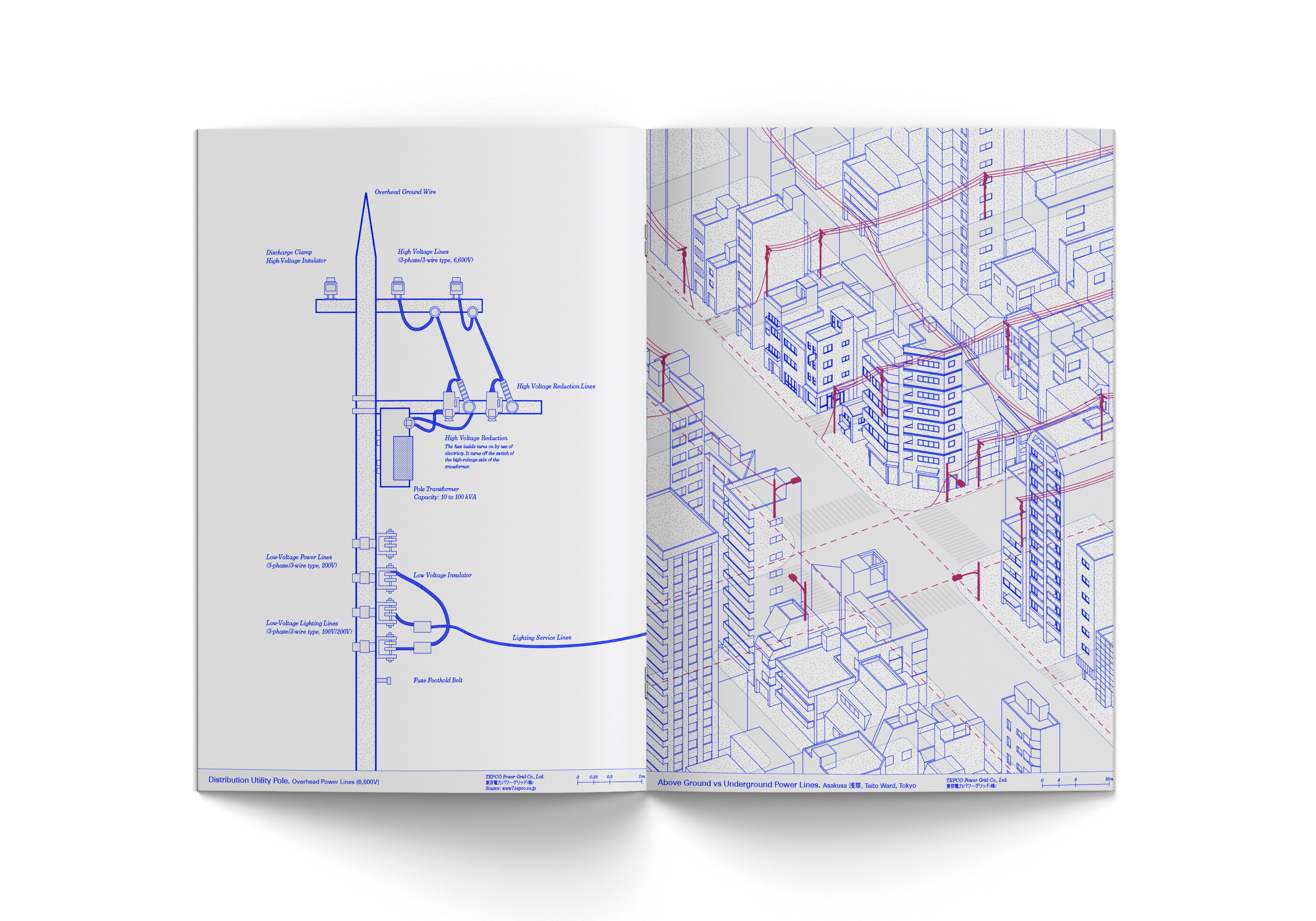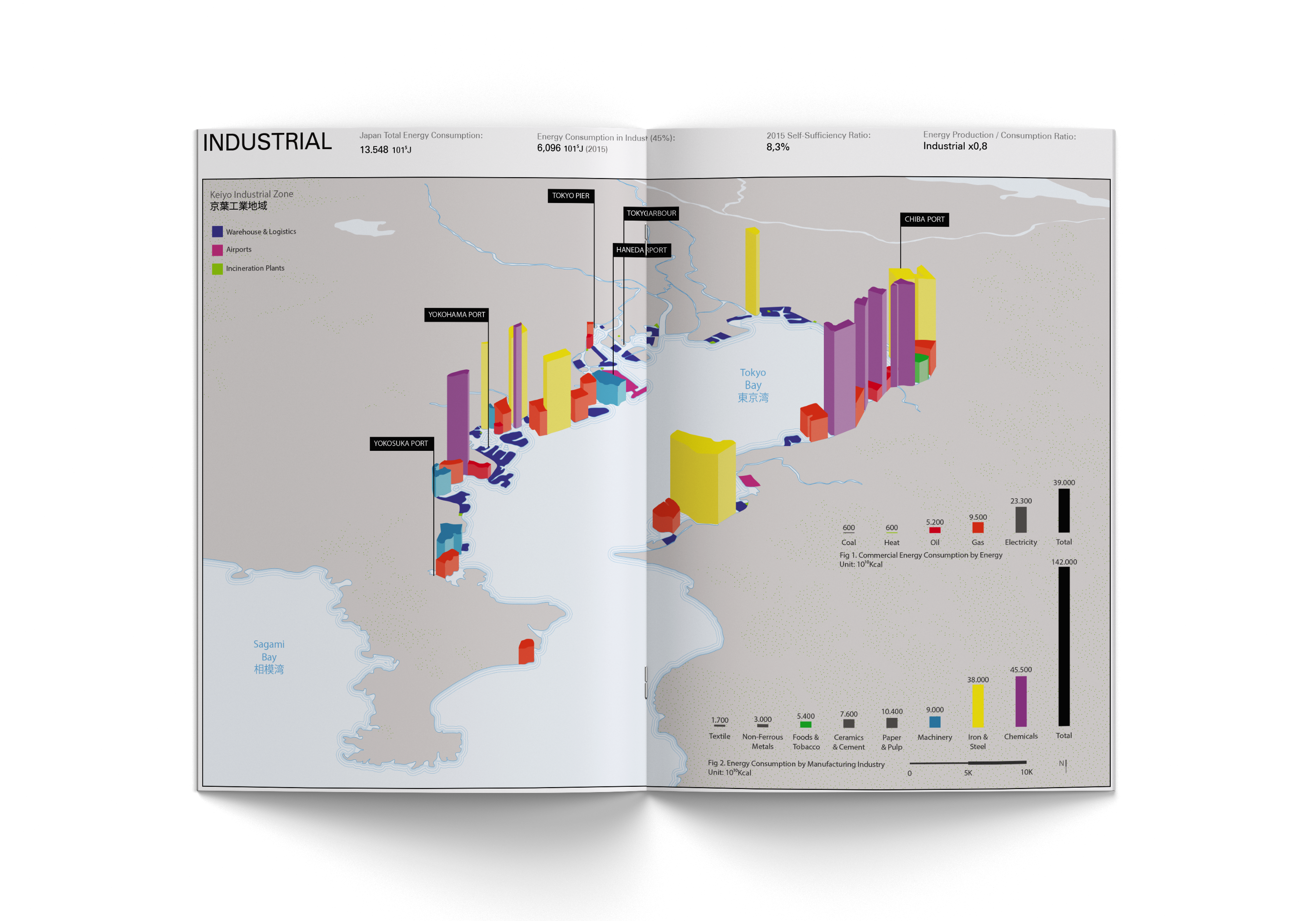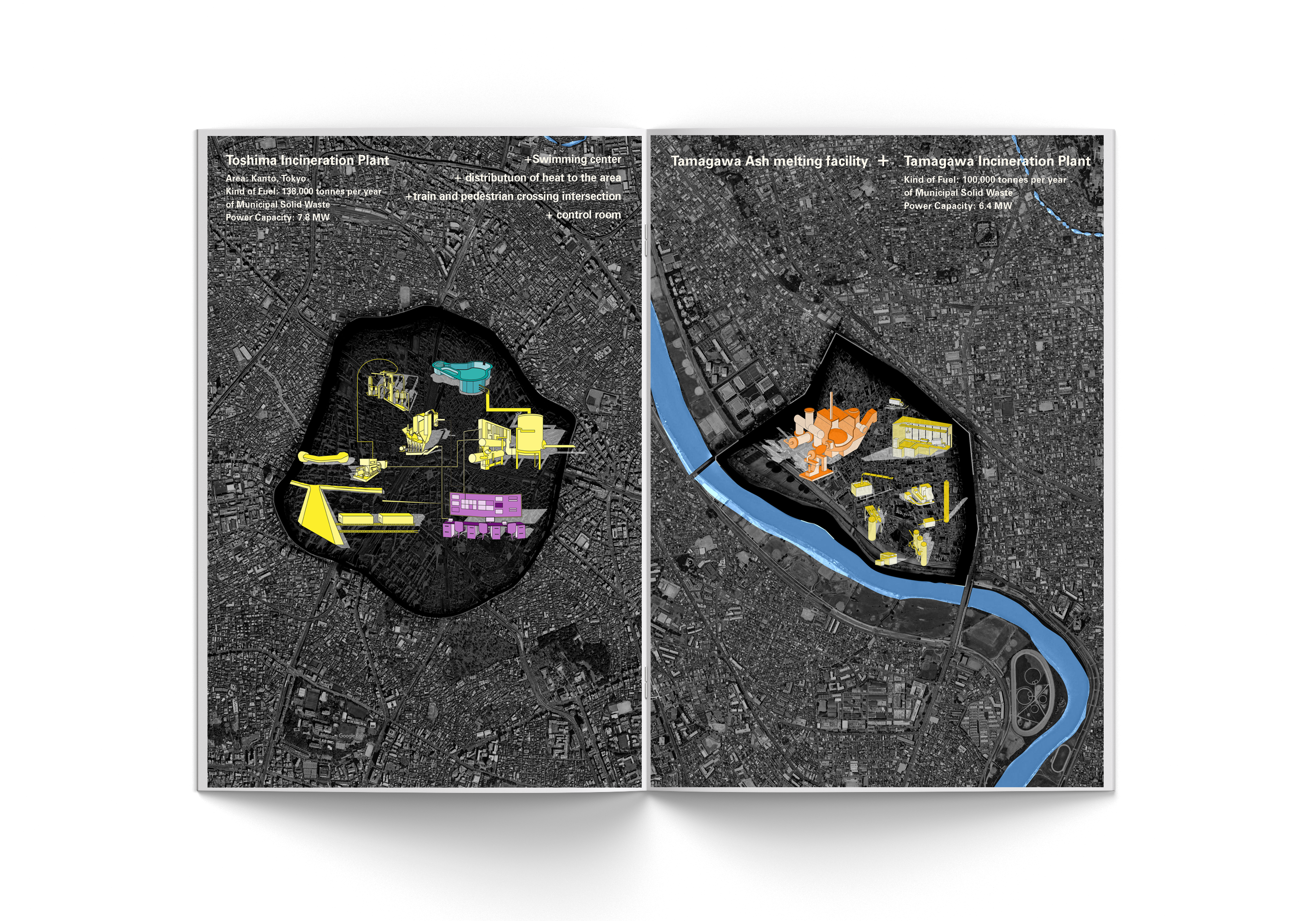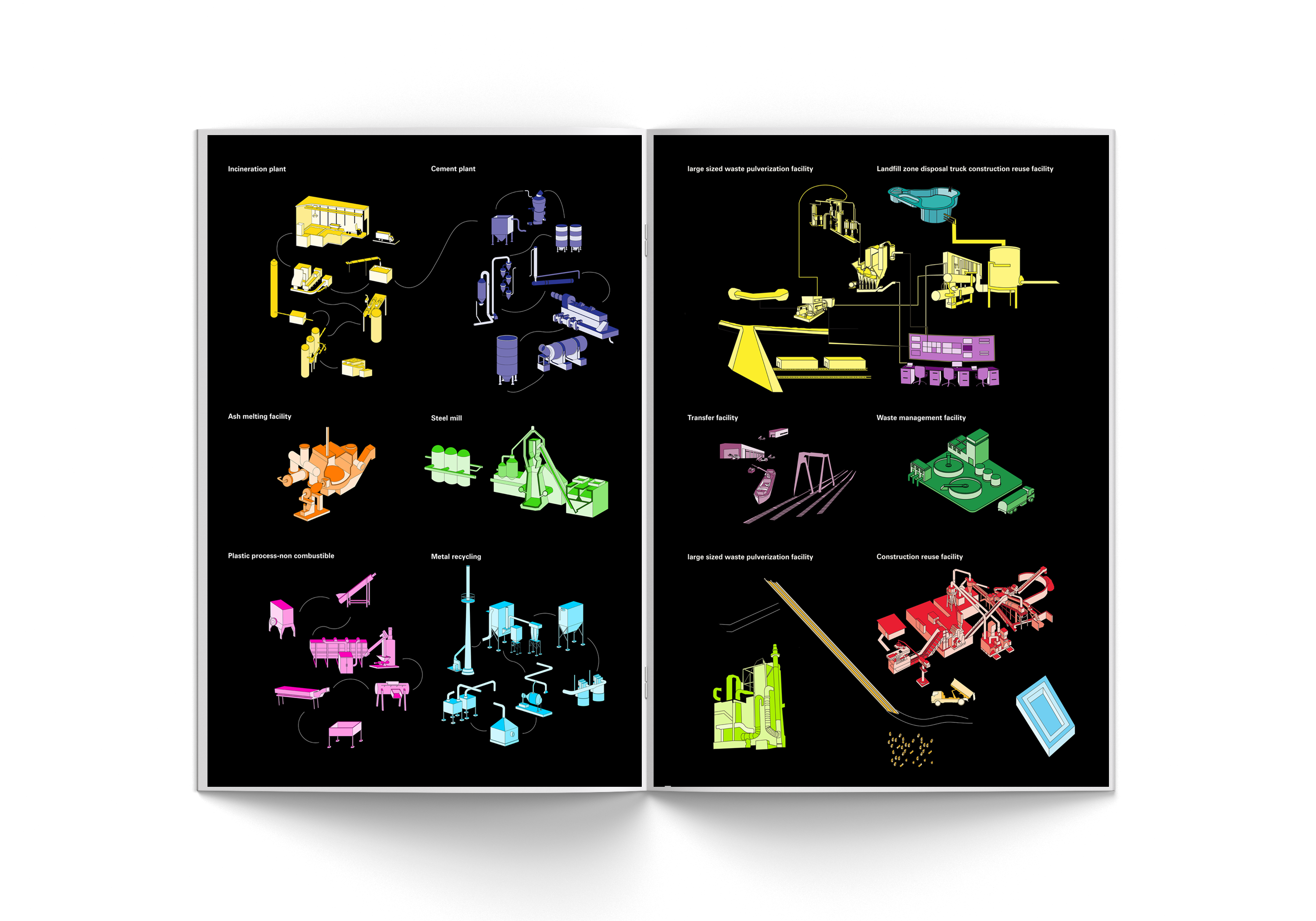















5 pages
A4 size 210x297mm
04. Distribution
Electric power distribution is the final stage in the delivery of electric power; it carries electricity from the transmission system to individual consumers. The electric power distribution grid is analyzed through three case study locations, Hongo, Asakusa and Omotesando, in Tokyo. The complexity of Japan’s system of utility poles and overhead or underground power lines rise new questions for the future distribution systems.
A4 size 210x297mm
04. Distribution
Electric power distribution is the final stage in the delivery of electric power; it carries electricity from the transmission system to individual consumers. The electric power distribution grid is analyzed through three case study locations, Hongo, Asakusa and Omotesando, in Tokyo. The complexity of Japan’s system of utility poles and overhead or underground power lines rise new questions for the future distribution systems.
6 pages
A4 size 210x297mm
05. Consumption
A4 size 210x297mm
05. Consumption
Japan has largely improved energy consumption efficiency from 1970 to 1990. Having 2030 set as a goal to achieve energy consumption efficiency improvement of 35%, diverse efforts in each sector have been made, such as the BEMS Building Energy Management System and HEMS Home Energy Management System for office buildings and residential respectively.
14 pages
A4 size 210x297mm
06. Waste
This is a surgical operation on the 23 wards of Tokyo, the last stage of all systems. The Metropolis employs its technology to repurpose, reuse and dispose. Unlike the fossil fuels that need millions of years to substantiate, waste management is about giving back immediately. In the centre of those processes what stands is interaction.
A4 size 210x297mm
06. Waste
This is a surgical operation on the 23 wards of Tokyo, the last stage of all systems. The Metropolis employs its technology to repurpose, reuse and dispose. Unlike the fossil fuels that need millions of years to substantiate, waste management is about giving back immediately. In the centre of those processes what stands is interaction.


